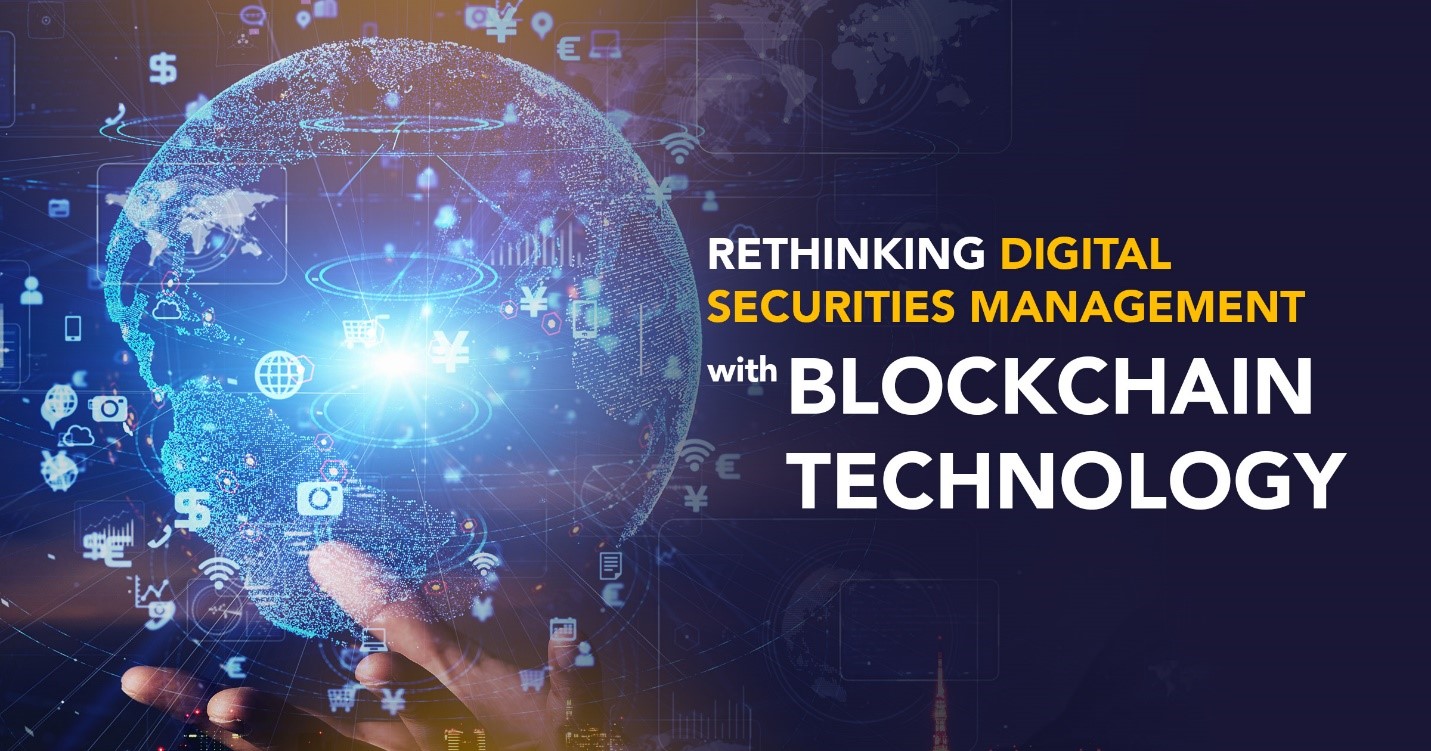Rethinking Digital Securities Management with Blockchain Technology

The digitalization of shares, bonds, and derivatives has propelled the steady rise of digital securities in recent years. Managing digital securities saves time and resources; it is also easier to repurpose or diversify such assets, enhancing overall growth. For these reasons, businesses are increasingly opting into the digital transformations of their securities and other assets.
However, traditional digital securities management platforms are monolithic and myopic in scope, which leads to a vast array of problems. We shall soon focus on the specific issues, but in general, they hinder the achievement of the domain’s fullest potential. In other words, digital securities inherit the shortcomings of the legacy infrastructure, which makes it less agile, secure, and robust.
The problem is not beyond a solution. Distributed ledgers, such as blockchain, can enable us to streamline digital securities and their management. In doing so, they also empower us in mitigating the problems emanating from traditional management platforms. In this article, we shall look at a comprehensive discussion on these matters.
The Pitfalls of Legacy Systems in Digital Securities Management
To begin with, we must look closely at the problem. We must also realize that digital securities often involve sensitive information, which demands proper handling. Otherwise, there can be an immense loss, both in terms of value and safety. Furthermore, the misuse of securities-related information can amount to severe attacks on a business’s prospects.

Considerations regarding data security come foremost with digital securities. Legacy systems, by their very nature, fall short in this regard. For one, storing data in centrally located servers makes them vulnerable to hacks and breaches. Furthermore, legacy systems are highly opaque, which enhances the risk of manipulation and tampering.
From the standpoint of regulation and compliance, as well, monolithic systems pose severe headaches. Meeting KYC/AML regulations is a must for stakeholders in the digital securities domain. But the involvement of multiple intermediaries makes the process highly cost and resource-intensive; red-tapism is also rampant, while truly comprehensive systems are lacking. In combination, these factors add substantially to the enterprise’s overall digital securities management cost. Additionally, the inherent storage inefficiencies of legacy systems entail a vicious cycle, whereby the data collected for KYC/AML is subject to the threats to privacy, as mentioned above.
In terms of compliance, the problem is the ever-changing global regulatory scenario. Traditional systems are materially unable to keep track of such shifts, which results in value lost to accidental non-compliance. There’s also a strengthening of risk factors. Legacy digital securities management systems are mostly incompatible with much-needed APIs and integrations, which further hampers their performance.
eDLX by ProximaX: A Solution for Distributed Digital Securities Management
So much for the problem; let us now discuss the solution. It shall serve us better to sharpen our focus rather than speaking in general terms. Instead of a broad-view approach to how blockchains can reform digital securities management, we shall discuss how the Enhanced Distributed Ledger for eXchanges (eDLX) is already walking on this path. After all, the tangible is usually more accessible than the abstract.

ProximaX Sirius—a next-gen Integrated and Distributed Ledger Technology (IADLT)—underlies eDLX, a distributed solution for digital securities trading and management. It facilitates the issuance and deposit of a wide range of securities, including bonds, real estate, and derivatives.
Among other aspects, eDLX intends to bridge the gap between security issuance, custody, and trading by creating a continuous, end-to-end platform. It is a highly efficient trading solution with increased accuracy and reduced probability of errors. Most importantly, eDLX offers near instantaneous trade settlement (T+0) instead of traditional legacy systems (T+3). Furthermore, the protocol can integrate multiple eDLXs from various jurisdictions, thus ensuring seamless compliance and interoperability.
As a comprehensive platform, ProximaX supports integrations with off-chain P2P storage, streaming, and database service layers. Coupled with the platform’s compatibility with public-private hybrid networks, such integrations optimize functionality and usability. As a whole, the solution imparts transparency, flexibility, security, speed, and cost-efficiency to the management of digital securities.
Towards the Future of Digital Securities: Safety, Compliance, and Integration
There has been a long-felt need for a genuinely good real-time digital securities management system. There are a number of systems developed using DLT, but many are developed using public chains, creating multiple issues surrounding the need to have a solution that must adhere to a regulated framework. These solutions end up being convoluted with complicated smart contracts that should not have been the case.
The more smart contracts there are, the more security issues there are to be addressed. From a regulatory standpoint, it could also pose a nightmare to manage. The entire market is so convinced – and yet so misled at the same time – that the concept of having smart contracts is the only approach to the problem. Most fail to see that there are other simpler and better approaches to this.

ProximaX’s eDLX has been a breakthrough on this front; that too, at multiple levels. Recording securities transactions on the blockchain make them immutable and optimally verifiable. This is a given for DLT, but what makes our system very distinctly different is that all transactions can only happen between investors that are properly verified, all without the need to use smart contracts. In fact eDLX does not use smart contracts. It is also built to ensure that it conforms to most regulatory requirements.
Asset owners and regulators alike can keep track of securities without compromising the former’s privacy. From distributed storage of KYC-related information to the robust digital identity framework, SiriusID, the platform has several ways of neutralizing attack vectors. Furthermore, cryptography and Supercontracts, which is a different approach to the smart contracts that we know of, make securities transactions inherently secure and flexible when it comes to the need to use smart contracts.
In terms of usability, the platform’s unified nature relieves individuals from needing to have separate digital securities management accounts. This streamlines the user experience while minimizing clutter and the risk of making mistakes. Above all, the model is highly cost-efficient, involving minimal intermediation and infrastructural requirements; for most parts, issuers and investors interact directly. Simultaneously, however, eDLX pushes for more robust compliance to AML/CFT regulations, despite streamlining the trading experience.
As such, eDLX offers equity, debt, real estate, bonds, shares, and asset-backed securities as Security Tokens that can be highly regulated. Fractional ownership and trading are, by far, the most favorable outcome of blockchain-powered asset tokenization. Traditional digital securities management systems have mostly lagged in this regard, whereas there’s a tremendous market opportunity for tokenized assets. At the end of 2020, the global Security Token Offering (STO) market stood at $4.1 billion; it is expected to grow to $19 billion by 2022. For better or worse, eDLX shall contribute to this phenomenal success story.
As blockchains disrupt the global equity market, eDLX leads from the front in the true spirit of a torchbearer. Adopting a unique approach to digital securities management, the solution is jurisdiction-agnostic. It is also compatible with wide-ranging financial instruments, both conventional and crypto-based. To conclude, we can rightfully claim to have discovered the leeway to the future of digital securities; the time has come to rethink digital securities management.
Article Source: https://bit.ly/3yDvmSI